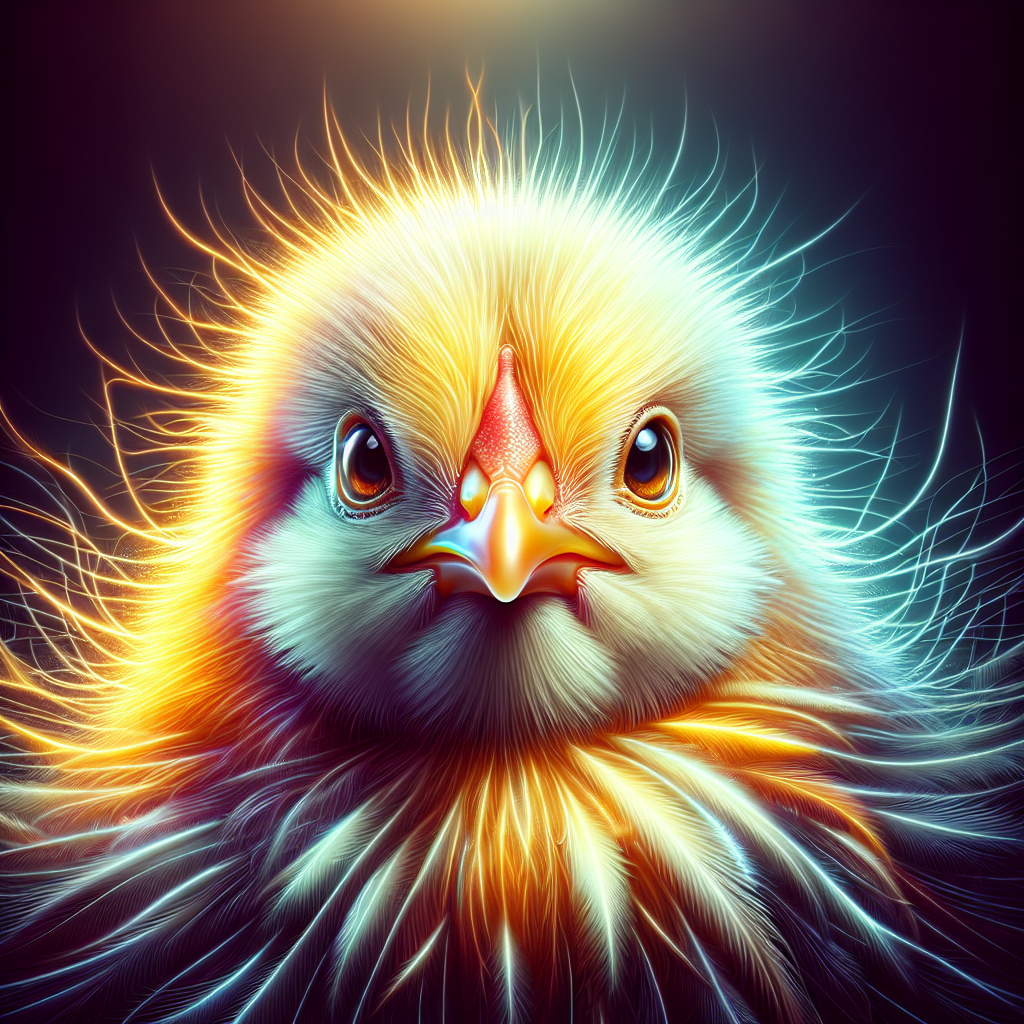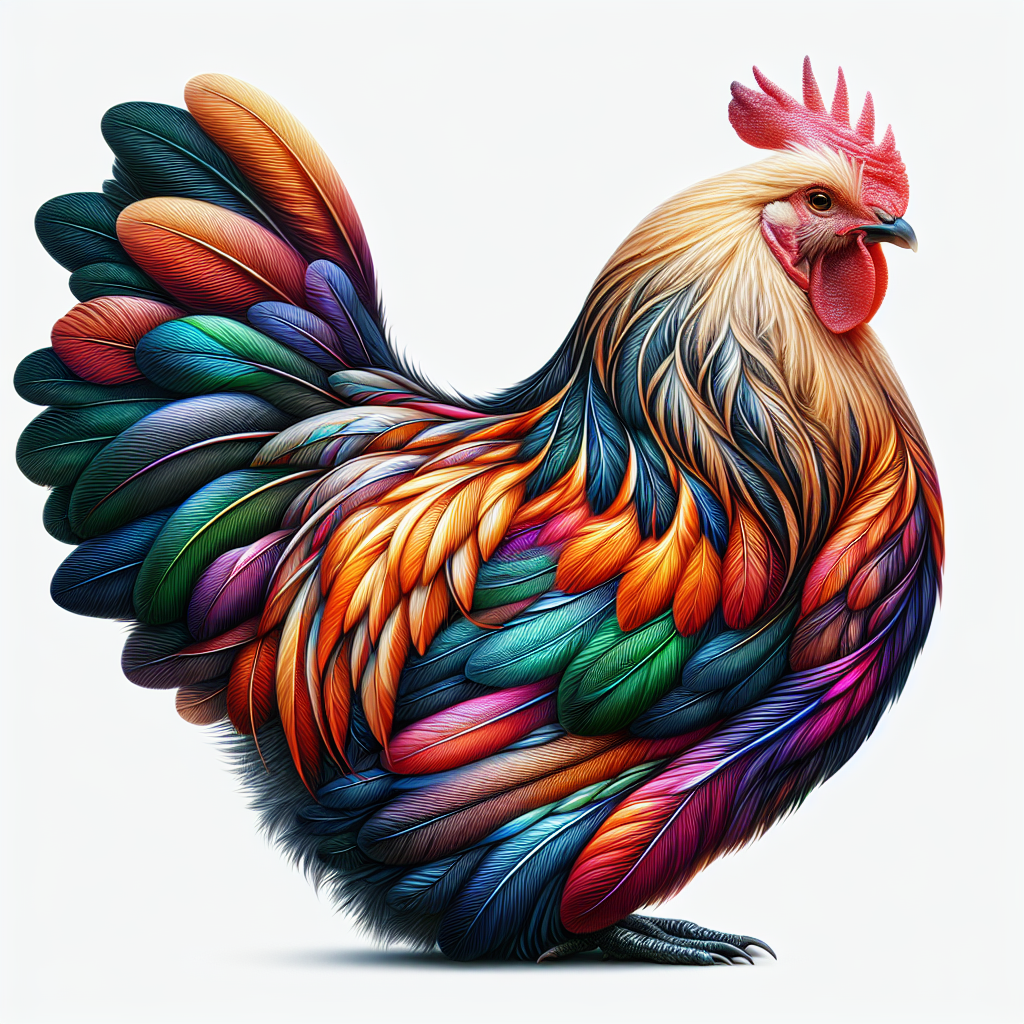Congratulations on your new hybrid chicks! Now that they have hatched, it’s important to ensure their health and vitality as they begin their journey. In this article, we will explore some key strategies and tips to help you provide the best care for your adorable feathered friends. From nutrition and temperature control to monitoring their behavior and providing a safe environment, we have you covered. Let’s dive in and give your hybrid chicks the best start in life!
Housing and Environment
Temperature
Providing the appropriate temperature is crucial for the well-being of your hybrid chicks. When they first hatch, they rely on their environment to maintain their body temperature, so it’s important to maintain the brooder temperature at around 95°F (35°C) for the first week and decrease it by 5°F (2.8°C) every week until reaching the ambient temperature. Use a reliable thermometer to regularly monitor the temperature in the brooder and make adjustments when needed to ensure your chicks are comfortable.
Humidity
Humidity is another essential factor to consider in the brooder. During the first week, it’s recommended to maintain a humidity level of around 50-60% to help prevent dehydration and ensure proper development of your chicks. As they grow, you can gradually decrease the humidity level to around 40% by the third week. Monitoring humidity using a hygrometer is essential to create an optimal environment for your chicks’ growth.
Ventilation
Good ventilation is vital for maintaining clean air and preventing respiratory diseases in your hybrid chicks. Ensure that the brooder is well-ventilated by providing proper air circulation and avoiding drafts. Using a fan or opening windows can help regulate air quality. However, be cautious not to create excessive airflow that can cause chilling. Regularly check the brooder for moisture buildup and address any issues promptly to maintain a healthy environment.
Lighting
Lighting plays a crucial role in the development and behavior of your hybrid chicks. Providing a consistent source of light helps establish their natural day-night cycle. For the first week, provide 24-hour light to prevent any risk of trampling or injury during darkness. After the first week, gradually reduce the lighting period to around 16 hours of light and 8 hours of darkness per day. Using a low-wattage bulb or a red light can minimize stress and promote healthy growth.
Feeding and Nutrition
Proper nutrition
Ensuring proper nutrition is fundamental to the health and vitality of your hybrid chicks. Feed them a commercial chick starter feed specifically formulated for their age and breed. These feeds contain the necessary proteins, vitamins, and minerals to support healthy growth. Avoid providing excessive treats or supplements as they can lead to nutritional imbalances and health issues. Consult a poultry nutritionist or veterinarian to ensure your chicks receive the appropriate nutrition for their specific needs.
Water supply
Having a clean and accessible water supply is essential for your hybrid chicks’ hydration and overall health. Provide fresh and clean water at all times, using shallow waterers or specialized chick waterers to prevent drowning hazards. Regularly check and refill the water containers, ensuring they are situated at an appropriate height to avoid contamination. Keep the waterers in a shaded area to prevent overheating and algae growth.
Feeding schedule
Establishing a consistent feeding schedule helps your hybrid chicks develop healthier eating habits. Initially, feed them chick starter feed around four to six times a day, offering a sufficient amount for all chicks to eat without wastage. As they mature, reduce the number of feedings to three times a day until they are around six weeks old. After that, you can transition to two feedings a day, ensuring they have access to feed at all times. Observe the chicks’ behavior and adjust the feeding schedule accordingly to meet their growing needs.
Healthcare and Hygiene
Regular check-ups
Ensuring the health of your hybrid chicks requires regular check-ups from a poultry veterinarian. Schedule routine visits to monitor their growth, development, and overall well-being. These check-ups provide an opportunity for early detection and treatment of any potential health issues, ensuring that your chicks thrive and remain healthy as they grow.
Vaccinations
Vaccinations are an essential part of maintaining a healthy flock of hybrid chicks. Consult with a poultry veterinarian to determine the appropriate vaccination schedule for your specific breed and region. Common vaccinations include those for Marek’s disease and coccidiosis. Administering vaccinations at the recommended times helps protect your chicks from potentially life-threatening diseases and ensures their long-term health.
Parasite control
Parasites can significantly impact the health of your hybrid chicks, leading to various health issues. Implement an effective parasite control program recommended by a poultry veterinarian to prevent infestations. Regularly inspect your chicks for signs of external parasites such as mites or lice and promptly address any infestations with appropriate treatments. Additionally, practice good coop management, such as regular cleaning and disinfecting, to minimize the risk of internal parasites.
Cleanliness
Maintaining a clean environment is crucial for the health and hygiene of your hybrid chicks. Regularly clean the brooder, removing any droppings, uneaten feed, and dust. Replace the bedding regularly to prevent the buildup of bacteria and odors. Additionally, ensure proper sanitation of waterers and feeders to prevent the spread of diseases. Cleanliness plays a vital role in reducing the risk of infections and maintaining a healthy living environment for your chicks.
Brooder Setup
Temperature regulation
Providing a properly regulated temperature in the brooder is essential for the well-being of your hybrid chicks. Use a reliable heat source, such as a heat lamp or heat plate, to maintain the desired temperature range. Install a thermometer at chick height to monitor the temperature accurately. Adjust the height and intensity of the heat source to maintain the recommended temperature for the chicks’ age. Regularly check and adjust the temperature as needed to ensure your chicks are comfortable.
Bedding
Choosing the right bedding material is important for ensuring cleanliness and comfort in the brooder. Use materials such as pine shavings or straw as bedding, avoiding cedar shavings, which can be harmful to chicks. Provide a thick layer of bedding to absorb moisture, provide insulation, and cushion the chicks. Regularly clean and replace the bedding to maintain a clean environment and reduce the risk of respiratory issues.
Space requirements
Proper space allocation is crucial for the well-being and development of your hybrid chicks. Provide enough space in the brooder to allow for free movement and promote healthy exercise. A general rule of thumb is to provide around half a square foot of space per chick for the first few weeks. As they grow, gradually increase the space allocation to prevent overcrowding, which can lead to stress and aggression. Adequate space ensures healthier growth and reduces the risk of injuries.
Chick starter feed
Choose a high-quality chick starter feed specifically formulated for your hybrid chicks’ nutritional needs. These feeds contain the necessary nutrients and energy to support their growth and development. Make sure the feed is always available in feeders that are easily accessible to the chicks. Provide proper feeders that prevent wastage and contamination. Observe the chicks’ eating habits and adjust the amount of feed provided accordingly to avoid overfeeding or underfeeding.
Preventing Stress and Injuries
Handling and socialization
Proper handling and socialization play a crucial role in reducing stress and promoting the overall well-being of your hybrid chicks. Handle your chicks gently and frequently to help them become comfortable with human interaction. Avoid sudden movements or loud noises that may startle them. Gradually introduce them to new environments, such as outdoor spaces or other birds, to encourage socialization and reduce anxiety.
Avoiding overcrowding
Overcrowding in the brooder can lead to stress, aggression, and the spread of diseases. Provide enough space for your hybrid chicks to move and grow comfortably. Monitor their behavior and body language to ensure they have adequate space. If overcrowding occurs, consider providing additional brooders or transitioning them to a larger space. Regularly assess the number of chicks in relation to the available space to prevent overcrowding-related issues.
Minimizing noise and disturbances
A calm and quiet environment is essential for reducing stress levels in your hybrid chicks. Minimize unnecessary noise and disturbances, such as loud music, shouting, or sudden movements, as these can cause anxiety and disrupt their natural behaviors. Establish a peaceful atmosphere by choosing a quiet location for the brooder and avoiding frequent disruptions. Creating a stress-free environment contributes to the overall well-being and growth of your chicks.
Safe brooder setup
Ensuring a safe brooder setup is vital for preventing injuries and accidents. Regularly inspect the brooder for any potential hazards, such as sharp edges, loose wiring, or small gaps where chicks can get stuck or trapped. Install secure lids or wire mesh to prevent chicks from escaping or predators from entering. Use non-slip materials for flooring to prevent injuries and provide stable footing. Creating a safe brooder environment promotes the overall safety and health of your hybrid chicks.
Monitoring Growth and Development
Recording weight and measurements
Keeping track of your hybrid chicks’ growth and development helps assess their overall health and well-being. Regularly weigh your chicks and record their weights to monitor their growth progress. Additionally, measure their length, height, and wing length as they mature. These records provide valuable information for assessing their development and detecting any potential health issues. Monitor growth consistently to ensure your chicks are growing at a healthy rate.
Tracking feather development
Feather development is an important indicator of your hybrid chicks’ growth and overall health. Observe and track the development of feathers from their initial growth to full maturity. Any abnormalities or delays in feather development may signal underlying health issues. Regularly check for proper feather growth and appearance to ensure your chicks are developing properly.
Observing behavior
Your hybrids’ behavior can provide valuable insights into their health and well-being. Observe their feeding habits, activity levels, social interactions, and overall behavior regularly. Look for any changes in behavior, such as lethargy, loss of appetite, or aggressive behavior, which may indicate underlying health problems. Promptly address any significant changes in behavior to maintain the health and vitality of your hybrid chicks.
Monitoring leg and foot health
Proper leg and foot health is crucial for the mobility and overall well-being of your hybrid chicks. Monitor their leg and foot condition regularly. Look for any signs of lameness, swelling, or deformities. Provide appropriate bedding materials that cushion and support their feet. Prevent injuries by maintaining a clean and safe environment. Promptly address any concerns regarding leg or foot health to prevent long-term issues and ensure the optimal development of your hybrid chicks.
Supporting Hybrids’ Unique Needs
Understanding hybrid characteristics
Understanding the unique characteristics of your hybrid chicks is essential for effectively meeting their specific needs. Research and educate yourself on the breed characteristics, growth rates, and potential genetic disorders associated with your hybrid chicks. Knowing their genetic background helps you provide appropriate care, nutrition, and management practices to support their overall health and well-being.
Providing appropriate feed
Hybrid chicks have specific nutritional requirements that may differ from other breeds. Consult with a poultry nutritionist or veterinarian to determine the most suitable feed for your hybrid chicks. Ensure that their feed provides the necessary nutrients, vitamins, and minerals to support their hybrid characteristics and growth rates. Adjust the feed as they mature to meet their changing nutritional needs.
Addressing genetic disorders
Some hybrid chicks may be prone to certain genetic disorders or health issues. Familiarize yourself with the genetic background of your hybrid chicks to identify potential vulnerabilities. Regularly monitor your chicks for any signs of genetic disorders, such as poor growth, abnormal feather development, or susceptibility to infections. Promptly address any health issues and consult with a veterinarian for appropriate diagnosis and treatment options.
Ensuring Adequate Socialization
Establishing a social pecking order
Socialization is essential for your hybrid chicks to establish a healthy social pecking order. Allow your chicks to interact and establish their hierarchy within the flock. Avoid intervening unless aggression becomes excessive or dangerous. Establishing a social pecking order fosters a healthy dynamic and reduces stress among your hybrid chicks.
Introducing chicks to other birds
Gradually introducing your hybrid chicks to other birds helps them develop social skills and adapt to their future flock. Start by introducing them to older, well-behaved birds in a controlled and supervised environment. Monitor their interactions to ensure they are not subjected to excessive aggression or bullying. Gradual introductions facilitate a smoother transition and promote social integration among your hybrid chicks and other birds.
Encouraging natural behaviors
Hybrid chicks, like any other chickens, have natural instincts and behaviors that contribute to their overall well-being. Provide ample opportunities for them to express these behaviors, such as scratching, dust bathing, and perching. Incorporate natural elements into their environment, such as tree branches or rocks, to encourage exploration and exercise. Encouraging natural behaviors helps reduce stress, improve health, and promote the overall vitality of your hybrid chicks.
Preventing Common Health Issues
Preventing Coccidiosis
Coccidiosis is a common and potentially deadly disease in chicks caused by a parasite called coccidia. Preventing its occurrence is crucial for the health of your hybrid chicks. Maintain cleanliness in the brooder by regularly removing droppings and soiled bedding. Use medicated chick starter feed to help prevent the parasite from multiplying. Adequate spacing, good ventilation, and dry conditions also reduce the risk of coccidiosis. Consult with a poultry veterinarian for further prevention strategies.
Avoiding nutritional deficiencies
Proper nutrition is vital for preventing nutritional deficiencies in your hybrid chicks. Ensure they are receiving a balanced diet that meets their specific needs. Provide a high-quality chick starter feed formulated for their breed and age. Monitor their growth and behavior for any signs of nutritional deficiencies, such as slow growth, weakness, or feather abnormalities. Consult with a poultry nutritionist or veterinarian for assistance in addressing any deficiencies and adjusting their diet accordingly.
Addressing heat stress
Heat stress can be a significant issue for young chicks, particularly during hot weather conditions. Preventing heat stress is vital for maintaining the health and well-being of your hybrid chicks. Ensure good ventilation and air circulation in the brooder. Provide access to fresh, clean water at all times to encourage hydration. Create shaded areas within the brooder to allow the chicks to escape from direct sunlight. Monitor the temperature regularly and take appropriate measures, such as using fans or misters, to keep the brooder temperature within a safe range.
Preparing for Transition to Outdoors
Gradual exposure to outdoor conditions
Preparing your hybrid chicks for the transition to the outdoors requires gradual exposure to outdoor conditions. Start by introducing them to a sheltered outdoor area protected from extreme weather conditions. Gradually increase their time spent outdoors, allowing them to adjust to sunlight, temperature variations, and natural elements. Slowly expand their outdoor access until they are fully acclimated to their new environment.
Securing a safe outdoor space
Before allowing your hybrid chicks full access to the outdoors, ensure the area is safe and secure. Install appropriate fencing to prevent predation and discourage potential escapes. Remove any toxic plants or hazards from the outdoor space. Provide adequate shelter from elements, such as a coop or a designated area with protective covering. Creating a safe outdoor space safeguards the health and security of your hybrid chicks.
Introducing new food sources
As your hybrid chicks transition to the outdoors, they will have increased access to a variety of food sources. Introduce new food sources gradually to prevent digestive disturbances or nutritional imbalances. Allow them to forage for insects, grass, and other natural food sources while ensuring they still have access to their regular feed. The gradual introduction of new food sources encourages natural behaviors and diversity in their diet, contributing to their overall health and well-being.
Ensuring the health and vitality of hybrid chicks post-hatching requires careful attention to various aspects of their care. From providing the right temperature and nutrition to promoting socialization and monitoring their growth, each aspect plays a crucial role in their overall well-being. By following the guidelines outlined in this comprehensive article, you can create a healthy and nurturing environment for your hybrid chicks, setting them up for a vibrant and productive future.




